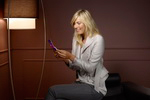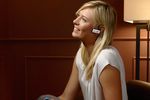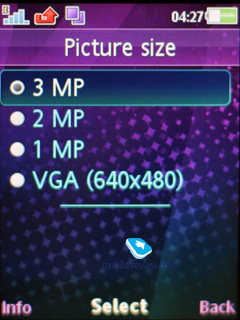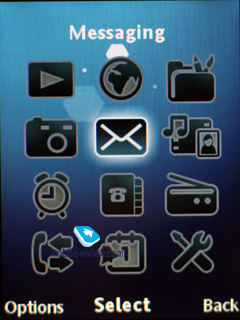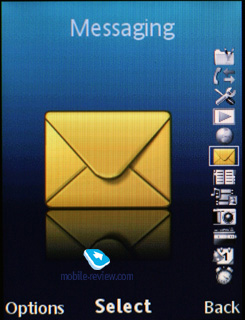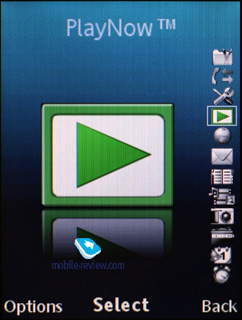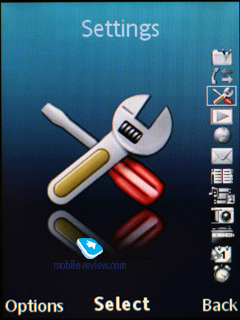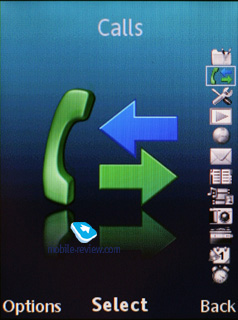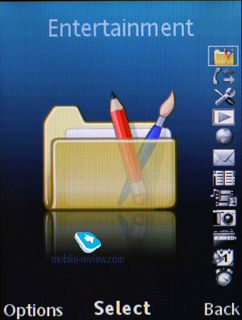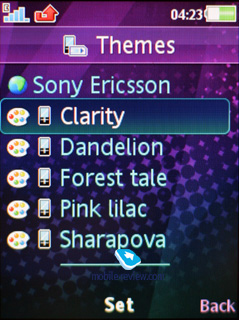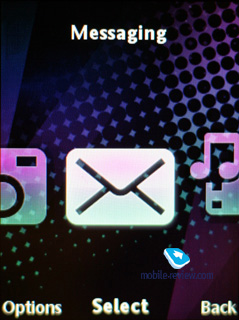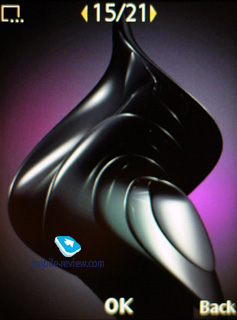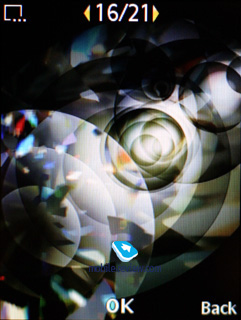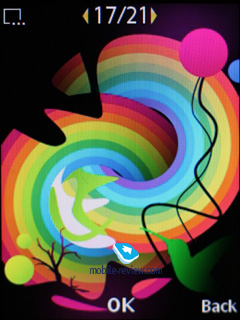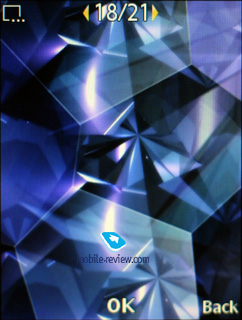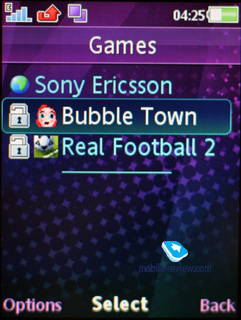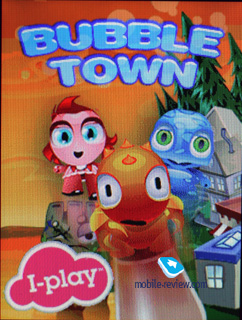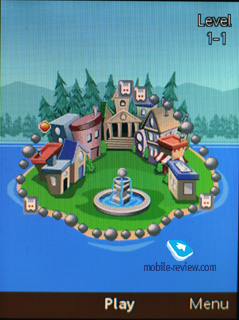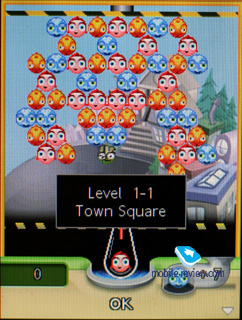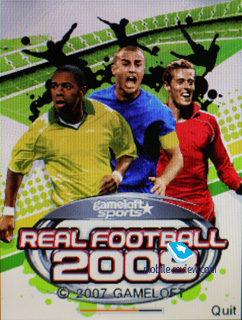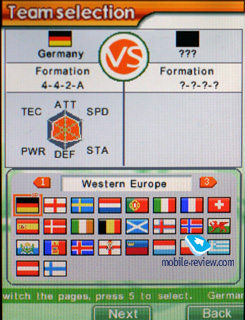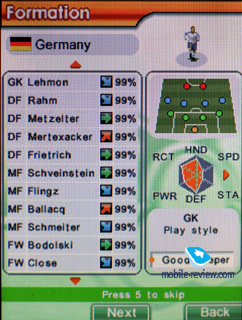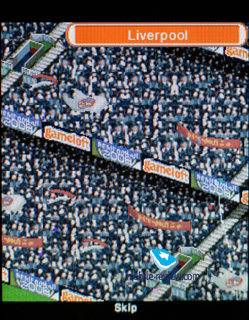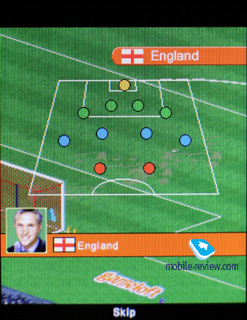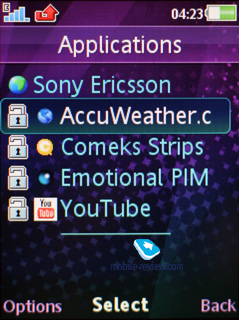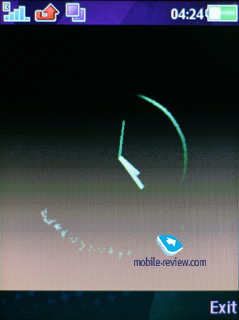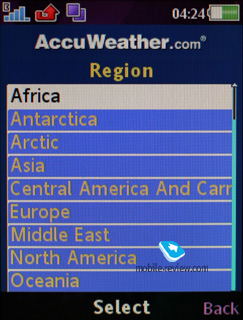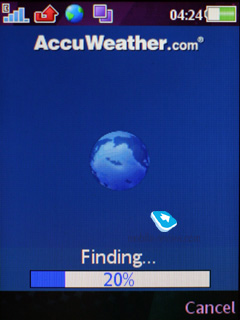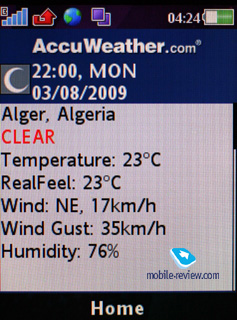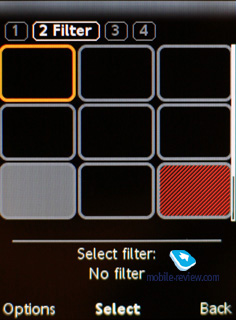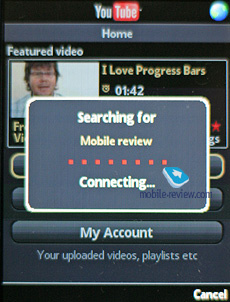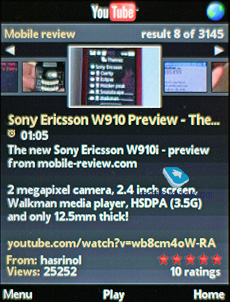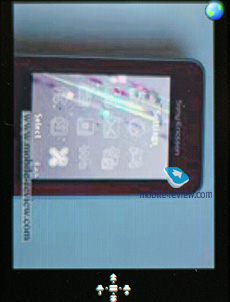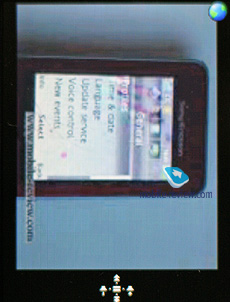|
|
Review of GSM/UMTS-handset Sony Ericsson T707
Live images of the Sony Ericsson T707
Table of contents:
- Positioning
- Design, Size, Controls
- Display
- Keypad
- Battery
- Memory, Memory cards
- Connectivity
- Camera
- Preinstalled themes, games, applications
- Music Department
- Impressions
Sales package:
- Handset
- 920 mAh Li-Ion Battery (BST-39)
- Charger
- Wired stereo-headset
Positioning
This phone really puzzles me. It'd seem over my career I should have seen enough phones of all kinds and styles, so that profiling a phone can't possibly pose any difficulty, but the Sony Ericsson T707 is a totally different beast - it feels as if the people who designed it had little to no clue about what kind of audience it would target, and, more importantly, why they created it in the first place. The reason it saw release was Maria Sharapova, as Sony Ericsson's contract with the tennis diva forced them to use her image in their advertising campaigns in some way. As you might have guessed, she made an appearance in the Sony Ericsson T707 photo shoot. Given Maria's experience in phone advertising (remember some of Motorola's ads featuring her?), Sony Ericsson's choice was more than justified, but I doubt it'll have any effect on the phone's sales. The simple fact is that Maria Sharapova has never been considered a key selling point neither in Russia, nor in the rest of the world; but being one of WTA's sponsors, where else could Sony Ericsson turn to?

I must confess now, though, that I wasn't completely honest with you in the paragraph above - it should be pretty obvious by now that the T707 is positioned as a phone for women, and it's difficult to imagine any other target audience for the T707, as it carries on the heritage of the Sony Ericsson Z610i (that blossomed more towards the end of its life cycle, when its price tag landed on a more adequate level). The phone is build around its vibrant and attractive design, although by and large, it's nearly identical to the Sony Ericsson W508, although it's not as florid.
And now let's give the floor to Sony Ericsson's marketing department and find out who they think the T707 was designed for and what departments it focuses on. The T707's sales guide has two sections: all about the T707 in 30 seconds and all about the T707 in 60 seconds. The former set of guidelines commands sales assistants to showcase the light effects built into the front panel and the ability to mute calls or alarm clock by waving in front of the camera. And another centerpiece of the phone, according to them at least, is its 3.2 MP camera. But honestly, I have a hard time thinking of a woman who'd need these visual effects, gesture control and a mediocre camera. It's either or: either she likes the way the T707 looks or she doesn't. Period. Within the next 30 seconds sales assistants are offered to tell more about the variety of colors the phone comes in, as well as its 3G connectivity, and time-dependent themes. Apparently, Sony Ericsson's marketing department squeezed out every secondary feature they could only think of and turned them into the phone's major highlights, but overlooked what the T707 was really about - design.
Now let's peek into the section where the phone gets put up against its competition. You might think, they list all strengths of the phone and how they stack up against its rivals? Wrong. As confusing as it sounds, Sony Ericsson truly believe that their new phone goes up against models that have been out of production for a while now: Nokia 6600 Slide (I guess they meant "6600 Fold"), LG KF330, and Nokia 7610 Supernova. To tell the truth, I haven't come across such a grim-looking case of self-deception for quite some time. As it turns out, phones that have been around for months now rival Sony Ericsson's latest and greatest phone. Curiously, though, even in this scenario they beat the T707 on many fronts, including retail price. And the solutions that will come to replace the abovementioned models simply leave the Sony Ericsson T707 no chance whatsoever, so that the only thing left going for it is design. And coincidentally this factor should be just enough to appeal to women, if only they manage to position the phone in the right way and get the sales force to present it in the right light. Samsung and their La'Fleur line-up are a perfect example of how this approach works, even though the phones themselves are far from multimedia powerhouses. But for some reason Sony Ericsson have decided that they are above all that. If someone will manage to come up with a sound argument as to why the T707 is a good choice in terms of price/quality ratio and why the way it's positioned is justified, I'll be more than happy to discuss that.
Back to the table of contents >>>
Design, Size, Controls
The T707's design has been carried over from the Sony Ericsson W508, including its thin battery cover and memory card slot beneath. The only element that sets them apart is the glossy coating of the front half, making the T707 look very much like the Sony Ericsson Z610, although unlike the latter, it utilizes a different kind of material (expect it to get scratched on the sides after a few days of use).

The phone comes in a choice of three colors: Mysterious Black, Spring Rose, Lucid Blue. All three look decent.

The handset measures up at 93x50x14.1 mm and tips our scales at 95 grams. The T707 is very palm friendly and the dent in the middle makes flipping it open a breeze. Housed on the left-hand side is the standard interface connector, while on the opposite side there is the volume rocker.


Sony Ericsson T707 vs Sony Ericsson Z750:


The camera is mounted on the front flip, and in fact this setup has much to do with the gesture control feature - the user can brush this palm across the camera lens (without touch it) to mute an incoming call or alarm clock alert.


Also placed on the front is a semi-circle LED, and the dent in the bottom right corner is another diode. Unfortunately, the user is not allowed to customize the backlight color, as it's keyed to the phone's casing color (for instance, bright pink backlight for the pink version and soft blue for the black edition). I must say, though, they these light effects do look stunning - when you get a message or receive a call, the front end of the phone starts pulsing and flashing in a very attractive manner.

Sitting beneath the mirror-esque surface of the front flip is the monochrome outer display capable of showing contact names on incoming calls and service indicators.


The T707 felt sturdy in the hand, although the plastic that the rest of the casing is made doesn't quite blend with the material used for the front flip, in that it looks significantly cheaper. All in all, the Sony Ericsson T707 looks and feels like a 150-170 Euro phone.


Back to the table of contents >>>
Display
The T707's display shows up to 262 K colors in the 240x320 pixel resolution (2.2 inch diagonal, 34x46 mm, TFT). This screen size allows it to accommodate up to 9 text and 4 service lines in most modes (plus it's possible to cram in more information when browsing Web or handling Email). All in all, the display is superb - we were very pleased by its color reproduction and how it performed under sunlight.


Back to the table of contents >>>
Keypad
The T707's keypad is made of a single plastic slab with round numeric buttons that offer some tactile feedback, thus making texting with it a breeze. From the design standpoint, the keypad is marvelous - they've carried over this idea from some other Sony Ericsson branded devices. All keys are lit in soft white, while the navigation pad's backlight is color-keyed to the phone's color scheme (pink for ours).



Back to the table of contents >>>
Battery
Unlike most previous offerings, employing Li-Pol batteries, the T707 makes use of a 920 mAh Li-Ion unit (BST-39). As the maker claims, the T707 provides up to 400 hours of standby and up to 4 hours of talk time.


In Moscow its battery life averaged two and a half days with moderate use (up to 1 hour of calls, about 30 minutes of games and 20 minutes of browsing, several hours of music). Should you get heavier on its features, you will need to recharge it every day. Within the European networks the device will last for at least twice as long in all modes thanks to better coverage. Continuous music playback drains the battery in 22 hours (against 24 hours claimed by Sony Ericsson).
It takes the T707 around 2.5 hours to charge up (it gets to 80% in around 1.5 hours).
Back to the table of contents >>>
Memory, Memory cards
The T707 comes with around 100 Mb of user-manageable memory. The top size of your memory card this phone can handle is 16 Gb.
Back to the table of contents >>>
Connectivity
USB
On USB-connection you are forced to pick connection type - specifically whether you will be accessing data stored on the memory card to just keep managing the phone or activate Print mode. For the first mode we mentioned above the handset goes off and you gain access to the contents of both the memory card and the phone internal memory. The T707's data transfer speeds top out at 2 Mb/s. If you just want your phone to turn into a modem, then pick the second option, when you will have a chance to play around with various USB settings for going online.
Bluetooth
The handset comes with EDR-enabled Bluetooth 2.0, the menu enables you to turn on enhanced power saving mode. There is also A2DP support, which allows employing wireless headsets with the T707. Its data transfer speed tops out at 100 Kb/s. The list of supported profiles:
- A2DP
- Basic Imaging Profile
- Basic Printing Profile
- Dial-Up Networking Profile
- File Transfer Profile
- Generic Access Profile
- Generic Object Exchange Profile
- Handsfree Profile
- Headset Profile
- HID
- JSR-82 Java API
- Object Push Profile
- Personal Area Network Profile
- Serial Port Profile
- Service Discovery Application Profile
- Synchronization Profile
- SyncML OBEX binding
Back to the table of contents >>>
Camera
The device is equipped with a 3.2 MP camera with a CMOS matrix without auto-focus. The device supports three possible resolutions - 2048x1536, 1632x1224, 1280x960, 640x480 pixels. Two types of data compression (Normal and Fine) are at your disposal. The majority of the sample photos were taken with "Fine" quality settings. The camera's interface is laid out vertically; since there is no side-mounted shutter key, its functions are performed by "OK" button.
The camera settings look the following way:
- Shutter sound. You can choose one of the three shutter sounds, but will not be able to turn the sound off.
- White balance. Choose between Auto, Incandescent, Fluorescent, Daylight, Cloudy.
- Effects. Several effects may be applied to the photos. These are Negative, Solarize, Sepia, Black & White.
- Timer is activated for a certain time period for self shooting.
- Night mode is for shooting in the dark. Noises raise on a photo, exposure time gets increased (you shouldn't move the device in order not to get a blurry photo).
- Shooting mode. Normal mode that takes ordinary photos. Multishot-mode (Burst 4) allows taking four photos in a series. Landscape is a very interesting mode that allows taking rather fetching photos. And the last, but not the least is Frames mode, which should be pretty self-explanatory.
The screen serves as a viewfinder while in the shooting mode. The picture moves very smoothly, details don't get dropped out. The numberpad helps in switching between various functions and shooting parameters quickly that significantly speeds up.
There is also a new feature in the camera menu, specifically "Add Position", in other words, it allows tagging your images with current coordinates. This feature may be disabled in the settings menu. But since the T707 doesn't come with a bundled GPS receiver, this ability is more of a gimmick here.
 |
 |
| (+) enlarge, 2048x1536, JPEG |
(+) enlarge, 2048x1536, JPEG |
 |
 |
| (+) enlarge, 2048x1536, JPEG |
(+) enlarge, 2048x1536, JPEG |
 |
 |
| (+) enlarge, 2048x1536, JPEG |
(+) enlarge, 2048x1536, JPEG |
 |
 |
| (+) enlarge, 2048x1536, JPEG |
(+) enlarge, 2048x1536, JPEG |
 |
 |
| (+) enlarge, 2048x1536, JPEG |
(+) enlarge, 2048x1536, JPEG |
 |
 |
| (+) enlarge, 2048x1536, JPEG |
(+) enlarge, 2048x1536, JPEG |
 |
 |
| (+) enlarge, 2048x1536, JPEG |
(+) enlarge, 2048x1536, JPEG |
 |
 |
| (+) enlarge, 2048x1536, JPEG |
(+) enlarge, 2048x1536, JPEG |
 |
 |
| (+) enlarge, 2048x1536, JPEG |
(+) enlarge, 2048x1536, JPEG |
Video
Video may be recorded in the 320x240 (176x144) pixel resolution at 30 FPS (3GP). Clip duration may be limited (up to 10 seconds) or unlimited. The T707's videos are pretty average quality-wise, and as always, we'd like to have VGA resolution for videos. Alas, there is no such option.
Video sample (mp4, 0,98 mb) >>>
Back to the table of contents >>>
Preinstalled applications, games, themes
We won’t review the T707’s standard feature pack, for it comprises all the goodies of the A200, which were given an in-depth close-up in a dedicated article. So here we will be focusing on the phone’s unique abilities and features.
The phone comes preinstalled with 5 different themes, all of them involving flash animation to some extent, and changing the looks of the main menu to a circle-shaped appearance or the grid we are all used to. One of the themes utilizes the image of Maria Sharapova and this is actually the only custom feature in the whole phone that has something to do with her name. here are several menu layouts available: grid, rotating, single icon.
One of the "unique" features of the phone, at least according to Sony Ericsson, are wallpapers that change depending on the current time. But in reality this feat has been used in S40 for ages now.
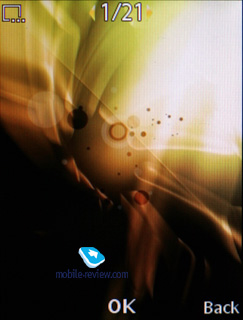
The phone comes preinstalled with a couple of games: Real Football II, Bubble Town.
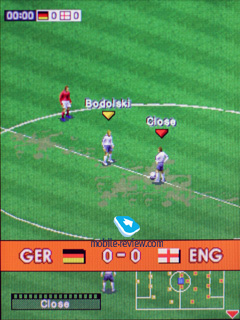
As far as improvements in the way of platform go, we can't overlook the new Chat mode that's now available in the Messaging menu - all you need to do is push the navigation key to the right to browse your chats with various contacts, where messages are grouped up by date. Apart from obvious visual appeal, this mode also allows for one click replies be it via an SMS, MMS or email. All in all, it's a welcome feature that will become par for the course in many new phones.
While at the standby screen, pressing the right soft-key will call up Search - a pop-up menu allowing the user to search for information in blogs and content providers. Pretty useless feature.
The phone's Applications section includes YouTube, AccuWeather, Emotional PM and Comeks Stripes.
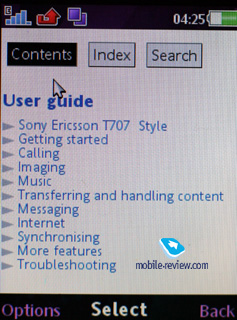
YouTube – this application allows accessing the mobile version of YouTube.com. While the quality of clips leaves much to be desired in most cases, the T707 lets you view videos in full-screen mode and even check out ratings. But the greatest hurdle here is that for want of WiFi such video sessions will definitely set you back a good amount, unless you are a lucky owner of an unlimited data plan.
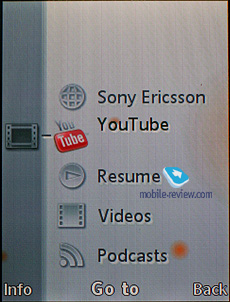
Back to the table of contents >>>
Music department
The T707 comes packaged with a standard Walkman 3.0 player that, however, doesn't support extra features, such as SensMe and Shake Control. On top of that its audio quality can't stand comparison to that of any music-minded phones out there.
The handset locates all files and folders on the memory card, and then gets the necessary data from ID3-tags. Supported audio formats - MP3, AAC, AAC+, E-AAC+, WAV, WMA and m4a. There are no limitations on bit rates; you can also upload files with VBR. The company recommends using files with 192 Kbit/s bit rate.
In the music library, all stored tracks may be classified by the following parameters:
- Artists – the application displays general list of artists in alphabetical order, you can carry out a fast search here;
- Albums – sorts by albums’ titles, search function is available as well;
- Tracks – general list of all tracks, sorting is conducted by tracks’ titles or ID3 tags;
- Genre – uses various music styles, like Hip Hop, Jazz, Blues as its criteria.
- My playlists – these are playlists, made up by user, that can be created both on the device and on PC, while viewing contents of the flash memory in USB Mass Storage mode; the handset also locates them when updating the library.
Unlike the second version of the player, while all transitions are still horizontal, they are designed in a slightly different matter, which won't bother you, however. You won't need to hit the buttons too many times to move about the player.
You can take advantage of the Repeat (one/all) playback mode. The T707 also features a progressive fast forward with customizable steps. You can't pick any visualization (an animation instead of the album art) here.
If your phone is playing music and you are at the standby screen, bringing up the Media section will lead you straight to the music player interface.
The audio quality hasn't changed a bit compared to otherWalkman-branded offerings. With the seven-brand equalizer you can create some settings of your own; the option of stereo widening is also available with the T707. The equalizer settings become available only once you have plugged in a pair of earphones.
The phone also boasts TrackID and an RDS-enabled FM-radio module (learn more about them in our dedicated write-up on A200).
Back to the table of contents >>>
Impressions
The Sony Ericsson T707 doesn't bring anything new to the table with its moderately strong vibro alert, a bit too loud ring tones and decent call quality.
The T707 retails for 180-200 Euro without contract, which is just flat out bewildering - it's a rip-off. Phones released months ago from Sony Ericsson's rivals offer more punch for less money and sometimes are even more fashionable. It seems like the T707 was originally designed as a reaction to the Nokia 6600 Fold, but it's way, way too late now. The current generation of this sort of phones is much more powerful than the T707 and cheaper at that - they rarely retail for more than 100-150 Euros. That's why I have no idea what Sony Ericsson are counting on with this phone and this price tag. Judging from the orders volume, it'll become a niche product, much like the Sony Ericsson W995. By the way, those who are in the market for a classy looking phone with a decent price/quality ratio, should rather give the Sony Ericsson W980 a go, given the fact that most retailers are dumping it right now (even though it's an all-around interesting solution and way more feature-rich than the T707). Had Sony Ericsson given their "brand-new" T707 a more reasonable price tag, it would have had a chance for some modest sales; but as it stands today, it's doomed.
See for yourself: the entry-level Nokia 2720 Fold that looks more or less the same will land on most markets at the price point of 55 Euro this September.
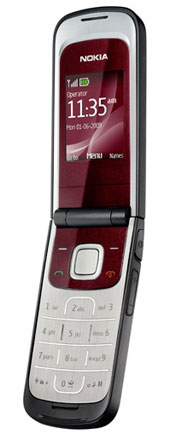
The Nokia 3710 Fold that turns out to be nearly identical to the T707 will boast a price tag of 140 Euro in September as well.
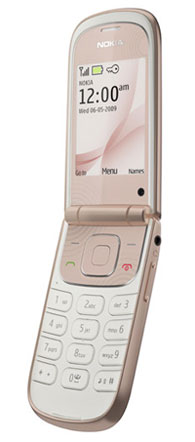
P.S. While reading some documents on the T707's positioning and promotional campaign, I couldn't get rid of the feeling that either they were written by people you had little to no understanding of how the market works, or the company was going downhill at such a rapid pace that these things didn't really matter. But ultimately, it all made me utterly sad - when Miles Flint was at the helm, such profanities were downright impossible, make no mistake about that.
Back to the table of contents >>>
Related links:
Eldar Murtazin (eldar@mobile-review.com)
Translated by Oleg Kononosov (oleg.kononosov@mobile-review.com)
Published — 14 September 2009
Have something to add?! Write us... eldar@mobile-review.com
|
News:
[ 31-07 16:21 ]Sir Jony Ive: Apple Isn't In It For The Money
[ 31-07 13:34 ]Video: Nokia Designer Interviews
[ 31-07 13:10 ]RIM To Layoff 3,000 More Employees
[ 30-07 20:59 ]Video: iPhone 5 Housing Shown Off
[ 30-07 19:12 ]Android Fortunes Decline In U.S.
[ 25-07 16:18 ]Why Apple Is Suing Samsung?
[ 25-07 15:53 ]A Few Choice Quotes About Apple ... By Samsung
[ 23-07 20:25 ]Russian iOS Hacker Calls It A Day
[ 23-07 17:40 ]Video: It's Still Not Out, But Galaxy Note 10.1 Gets An Ad
[ 19-07 19:10 ]Another Loss For Nokia: $1 Billion Down In Q2
[ 19-07 17:22 ]British Judge Orders Apple To Run Ads Saying Samsung Did Not Copy Them
[ 19-07 16:57 ]iPhone 5 To Feature Nano-SIM Cards
[ 18-07 14:20 ]What The iPad Could Have Looked Like ...
[ 18-07 13:25 ]App Store Hack Is Still Going Strong Despite Apple's Best Efforts
[ 13-07 12:34 ]Infographic: The (Hypothetical) Sale Of RIM
[ 13-07 11:10 ]Video: iPhone Hacker Makes In-App Purchases Free
[ 12-07 19:50 ]iPhone 5 Images Leak Again
[ 12-07 17:51 ]Android Takes 50%+ Of U.S. And Europe
[ 11-07 16:02 ]Apple Involved In 60% Of Patent Suits
[ 11-07 13:14 ]Video: Kindle Fire Gets A Jelly Bean
Subscribe
|







